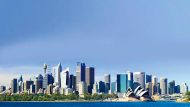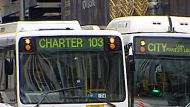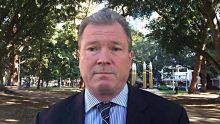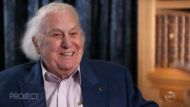Sydney's inner west can't be beaten when it comes to accessing jobs, shopping centres, schools and hospitals.
A new study by the Committee for Sydney and PwC has identified which areas of Sydney reach the most places of employment, retail outlets and social services in the shortest time using different modes of transport.
More NSW News Videos
Is Sydney outgrowing its infrastructure?
Sydney's population continues to rise, putting pressure on more than just housing. Will new road and light rail project be able to keep up?
The analysis also looked at house prices to find the "best value" accessible suburbs in the city.
The inner-west neighbourhood of Ashfield topped rankings, followed by Sydenham-Tempe-St Peters and Burwood-Croydon. Six of the top 10 suburbs on the list were in the inner west.

Some of Sydney's most exclusive neighbourhoods in the eastern suburbs and northern beaches were among the worst rated. .
Rose Bay-Vaucluse-Watsons Bay, Avalon-Palm Beach and Newport-Bilgola were the three lowest-ranked neighbourhoods.
The modelling drew on a variety of sources, including Google data on travel times, to evaluate the number of jobs and services accessible by car and public transport.
Eamon Waterford, the Committee for Sydney's director of policy and the report's co-author, said the study showed rail was "still king" in Sydney.
"You just can't beat being close to a good a train station," he said.
"The reality is that in peak hour on a weekday morning you can't get very far in 30 minutes in a car but you can get a very long way on a train."
The study compared how easy it was to travel to jobs on weekdays at 8am compared with travelling at noon. It revealed middle-ring suburbs, such as Homebush, Concord West-North Strathfield, Punchbowl, Revesby and St Ives, were the most affected by peak-hour traffic congestion.
"There are lots of people in those middle-ring suburbs that are geographically quite close to a lot of jobs but they are unable to get to them easily because of traffic," Mr Waterford said.
Residents in Sydney's middle-ring suburbs "stand to gain the most from reducing congestion", the report concluded.
Prime Minister Malcolm Turnbull said last year the city "should aim to have more people in western Sydney living in an ever-extending zone of the 30-minute city, where people do not have to travel too long to get to work, school or university".
But the committee's report found only about 30 per cent of Sydney suburbs were accessible to large numbers of jobs within 30 minutes.
"For Sydneysiders in many parts of the city, the 60-minute city is closer to their lived experience," the report said.
Residents living on the outer edges of Sydney had the worst access to employment; only 10 per cent of jobs could be reached within a 30-minute commute on a weekday morning.
By contrast, those living close to central Sydney could access 46 per cent of Sydney's jobs within a 30-minute car commute on a weekday morning.
While Sydneyhad more than 2 million jobs, or about a fifth of all of Australia's employment, Mr Waterford said the study found those jobs were "overwhelmingly" concentrated east of the city. Better planning was required to link transport and jobs, he said.
The study found shopping centres, schools and hospitals were much more evenly distributed across the city than employment.















